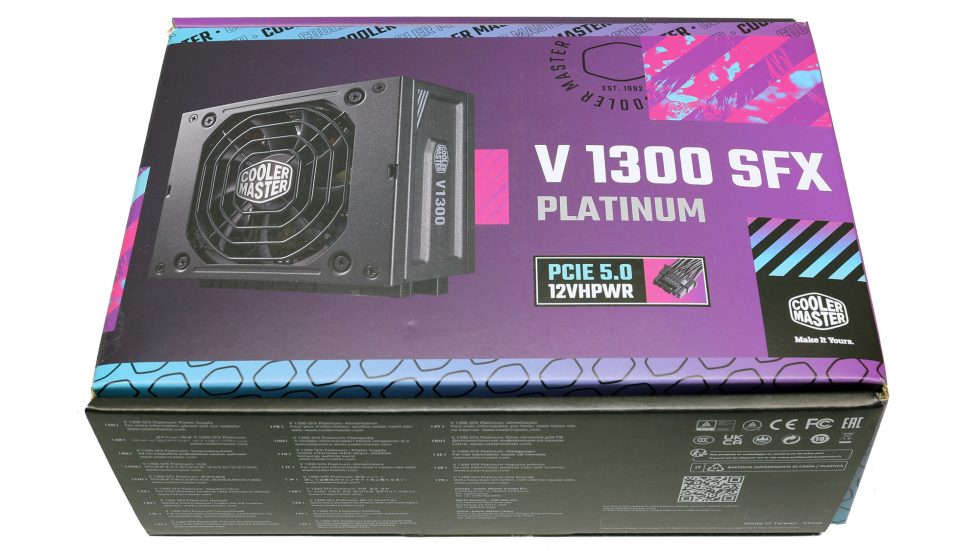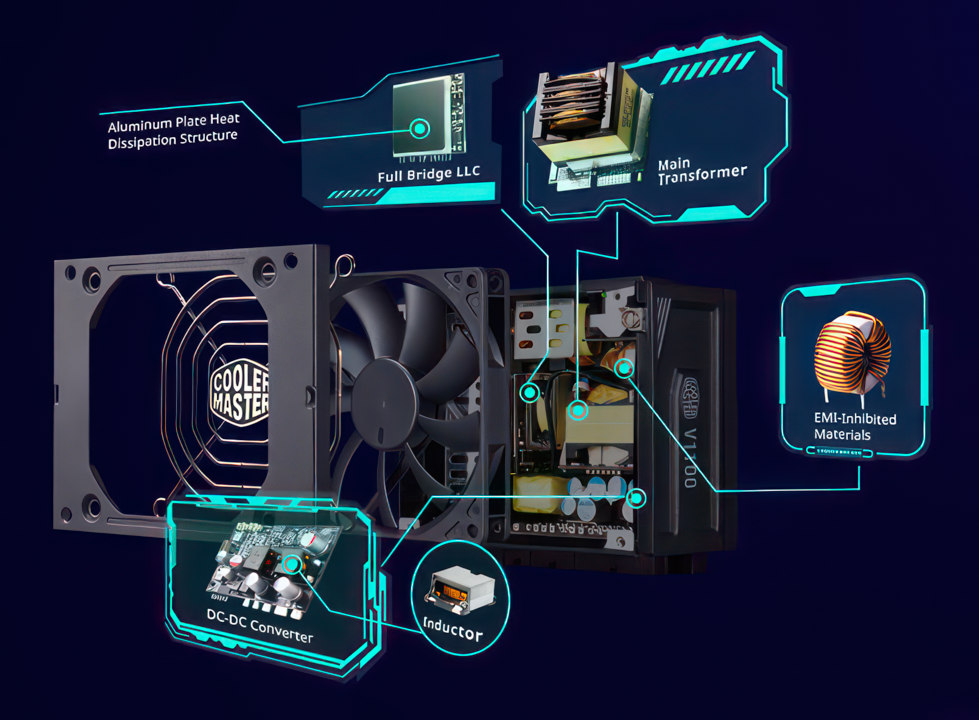An SFX power supply with 1300W maximum power, is that possible? Yes! Cooler Master has done it, as the V1300 SFX is the most powerful SFX power supply on the market today. However, there is a catch (actually two): it can only deliver its full power with a 230VAC input. Basically, this power supply is a V1100 SFX designed for 230V networks, so it can deliver 200W more. And it’s not cheap.
Reason enough for me to once again let my friend Aris from Hardwarebusters have his say (and picture) on our site, because he not only tested this power supply intensively, but also officially certified it via his company Cybenetics. Since it is certainly interesting for you as well, I am happy to offer him the platform here to share his findings with you on a case-by-case basis. And do not forget also his Website and the YouTube channel offer real gems of really well-founded reviews!
I’ve already reviewed the V1100 SFX, the strongest small-factor power supply with universal input, so it was high time to take a look at the V1300 SFX beast, which, however, can only handle 200-240V input voltage. A few years ago SFX power supplies could not exceed 750W, but lately we see more and more powerful power supplies in this category. Cooler Master, however, has targeted the top with its V1100 and V1300-SFX models. Best of all, they’re both ATX v3.0 compatible, meaning they can deliver double the power for ultra-short periods of time to handle power spikes.
If you want to be precise, though, it’s not a true SFX power supply, as it’s a bit longer. CM cheated a bit there by extending the modular sockets beyond the case, a trick that increased the internal footprint for such a high capacity. Another interesting feature is that this power supply actually has fan failure protection, and that’s easy to verify. When you turn off the fan, the power supply does not start. It’s nice to see this important protection being applied to desktop power supplies as well, as a cooling failure can cause major problems.
Before we get to the unboxing, the description and the individual tests on the next pages, I also have the test protocol (Cybenetics Report) for you for the readers of igor’sLAB. Here you can find all the important results of the certification. Of course, it cannot replace this review including an explanation of the individual results. Since my Cybenetics review of the V1300 SFX is not yet available, the link is to the review of the V1100 SFX.
cybenetics_mBp
| Technical data | |
| Manufacturer (OEM): | Sysgration |
| Max Power: | 1300W |
| Cybenetics Efficiency: | TBA |
| 80 Plus Efficiency: | Platinum |
| Noise: | Cybenetics A- (25-30 dB[A]) |
| Compliance: | SFX12V 4.0, PCIe 5.0, EPS 2.92 |
| Alternative Low Power Mode support: | yes |
| Power 12V: | 1299,6 W |
| Power 5V + 3.3v: | 120 W |
| Power 5VSB: | 15 W |
| Cooling: | 92mm Fluid Dynamic Bearing Fan (HA9215SH12FD-F00) |
| Semi-Passive Operation: | No |
| Modular Design: | Yes (Fully) |
| High Power Connectors: | 2x EPS (2x cables), 3x PCIe 6+2 pin (3x cables), 1x PCIe 12+4 pin (600W) |
| Peripheral Connectors: | 8x SATA (2x cables), 4x 4-pin Molex (single cable) |
| ATX/EPS Cable Length: | 310/450 mm |
| Distance between SATA connectors: | 100/145 mm |
| Distance between 4-pin Molex connectors: | 100/120 mm |
| In-cable capacitors: | No |
| Dimensions (W x H x D): | 125 mm x 65 mm x 100 mm |
| Weight: | 1.04 kg (2.29 lb) |
| Warranty: | 10 years |
- 1 - Einführung, technische Daten und Testreport
- 2 - Unboxing, Kabel und Schutzschaltungen
- 3 - Teardown: Topologie, Komponenten, Verarbeitung
- 4 - Load Regulation, Ripple Suppression, Transient Resonse
- 5 - Hold-Up Time, Timings, Inrush-Current
- 6 - Average Efficiency and PF
- 7 - Betriebsgeräusch und Lüfter
- 8 - Zusammenfassung und Fazit



































10 Antworten
Kommentar
Lade neue Kommentare
Veteran
1
Neuling
Urgestein
Veteran
Urgestein
Urgestein
1
Veteran
Veteran
Alle Kommentare lesen unter igor´sLAB Community →